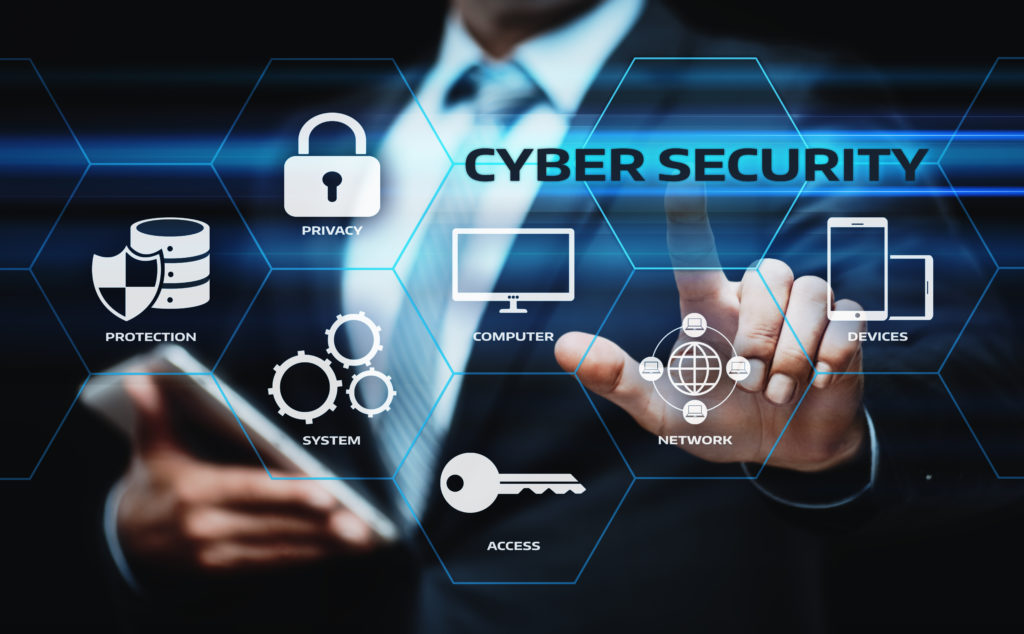How Data and Network Protection Protects Versus Arising Cyber Hazards
In a period marked by the rapid advancement of cyber risks, the relevance of information and network protection has actually never been more pronounced. Organizations are progressively dependent on sophisticated security steps such as security, gain access to controls, and positive tracking to safeguard their digital properties. As these risks end up being extra complex, recognizing the interaction in between data protection and network defenses is vital for mitigating dangers. This conversation intends to check out the critical elements that fortify an organization's cybersecurity stance and the strategies required to remain ahead of possible susceptabilities. What stays to be seen, nonetheless, is how these procedures will advance in the face of future challenges.
Recognizing Cyber Risks

The ever-evolving nature of technology continuously presents brand-new vulnerabilities, making it important for stakeholders to remain alert. People may unwittingly succumb social engineering methods, where enemies manipulate them right into disclosing sensitive information. Organizations face distinct challenges, as cybercriminals typically target them to manipulate valuable data or interrupt operations.
Additionally, the surge of the Net of Points (IoT) has increased the attack surface area, as interconnected gadgets can work as access factors for assailants. Recognizing the significance of robust cybersecurity techniques is critical for minimizing these risks. By cultivating an extensive understanding of cyber individuals, risks and companies can execute effective approaches to guard their electronic properties, making sure durability when faced with a progressively intricate danger landscape.
Trick Elements of Data Safety And Security
Making sure information safety and security requires a complex technique that incorporates different key components. One fundamental element is information encryption, which changes delicate info into an unreadable format, available just to licensed individuals with the proper decryption tricks. This serves as a crucial line of protection against unauthorized gain access to.
One more important part is access control, which regulates that can view or adjust data. By carrying out strict customer verification procedures and role-based gain access to controls, companies can decrease the threat of expert risks and data violations.

Furthermore, data concealing strategies can be used to safeguard delicate information while still enabling its use in non-production environments, such as screening and advancement. fft perimeter intrusion solutions.
Network Protection Approaches
Executing durable network security approaches is vital for safeguarding a company's electronic framework. These methods entail a multi-layered approach that includes both equipment and software program solutions created to secure the integrity, discretion, and availability of data.
One essential component of network protection is the release of firewall softwares, which offer as a barrier in between relied on interior networks and untrusted exterior networks. Firewall programs can be hardware-based, software-based, or a mix of both, and they help filter incoming and outgoing traffic based on predefined safety and security regulations.
In addition, intrusion detection and prevention systems (IDPS) play a vital duty in keeping track of network web traffic for dubious activities. These systems can signal administrators to prospective violations and take action to mitigate dangers in real-time. Regularly upgrading and patching software application is also essential, as susceptabilities can be exploited by cybercriminals.
Moreover, carrying out Virtual Private Networks (VPNs) ensures safe remote accessibility, encrypting data sent over public networks. Segmenting networks can reduce the attack surface and consist of possible breaches, limiting their influence on the total infrastructure. By embracing these methods, companies can successfully strengthen their networks versus arising cyber hazards.
Finest Practices for Organizations
Establishing finest methods for companies is critical in keeping a strong security pose. A comprehensive method to information and network protection begins with normal risk assessments to determine susceptabilities and prospective hazards. Organizations needs to carry out durable gain access to controls, making sure that just accredited workers can access sensitive data and systems. Multi-factor authentication (MFA) must be a typical demand to boost safety and security layers.
Furthermore, these details continuous staff member training and understanding programs are vital. Employees need to be informed on recognizing phishing efforts, social design strategies, and the importance of sticking to safety and security methods. Routine updates and spot administration for software and systems are additionally important to secure against recognized vulnerabilities.
Organizations have to test and establish incident action plans to make sure preparedness for prospective breaches. This includes developing clear interaction channels and roles during a protection occurrence. Additionally, information file encryption ought to be used both at rest and en route to safeguard sensitive details.
Finally, performing routine audits and conformity checks will certainly assist ensure adherence to pertinent policies and well-known policies - fft perimeter intrusion solutions. By adhering to these finest methods, companies can dramatically boost their durability against arising cyber threats and protect their essential possessions
Future Trends in Cybersecurity
As companies navigate a progressively complicated electronic landscape, the future of cybersecurity is positioned to progress substantially, driven by shifting and emerging innovations threat standards. One noticeable fad is the assimilation of artificial intelligence (AI) and equipment knowing (ML) right into security structures, enabling real-time hazard discovery and action automation. These technologies can evaluate huge quantities of information to determine abnormalities and potential violations extra successfully than traditional approaches.
An additional important fad is the surge of zero-trust style, which calls for constant verification of customer identities and gadget safety, no matter their location. This approach minimizes the risk of expert hazards and improves security versus outside attacks.
Additionally, the enhancing adoption of cloud services demands durable cloud safety methods that address special vulnerabilities linked with cloud environments. As remote job comes to be a permanent component, securing endpoints will certainly also become paramount, leading to a raised concentrate on endpoint discovery and action (EDR) services.
Lastly, regulative compliance will continue to shape cybersecurity methods, pressing organizations to take on extra stringent information protection you can try these out steps. Embracing these patterns will certainly be necessary for organizations to strengthen their defenses and navigate the developing landscape of cyber hazards successfully.
Conclusion
In final thought, the execution of robust information and network protection measures is important for companies to secure versus arising cyber threats. By using file encryption, data cyber security accessibility control, and efficient network protection strategies, companies can significantly lower susceptabilities and secure sensitive information.
In a period marked by the rapid development of cyber hazards, the value of information and network safety and security has actually never ever been more noticable. As these risks become more complicated, understanding the interaction in between data protection and network defenses is crucial for alleviating risks. Cyber hazards encompass a wide array of destructive activities aimed at compromising the discretion, honesty, and schedule of networks and data. A detailed technique to data and network protection starts with regular threat analyses to determine susceptabilities and prospective threats.In verdict, the application of durable data and network safety and security procedures is essential for organizations to safeguard against emerging cyber dangers.